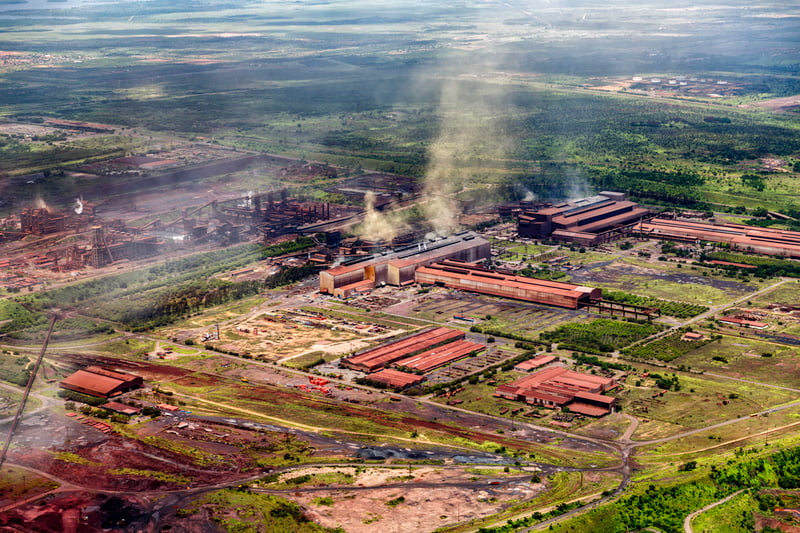Extracting aluminum and refining it into a substance that another manufacturer can use as an aluminum part requires many steps. The raw material, bauxite, is fed into a separator tank also known as a digester. Inside the digester tank are a series of wires that resemble a spider web. These wires carry an electrical current that separates the aluminum ore from the rest of the material. This process is known as electrolysis. The residual matter ends up layered on the walls of the tank. Periodically, this clay-like substance needs to be removed from the walls of the digester; pneumatically powered chipping guns do the job. Removing this residue is hot, dirty, and strenuous work.
Case Study
After cleaning one digester, a three-man crew began the process of removing their tools. To do this, two men climbed to the top of the digester. One pulled the chipping hammer up by its hose and the other man coiled the hose. The third person remained inside the digester to steer the chipping gun through the “spider wires” as it was being hoisted up.
 Above: Arial view of bauxite mine exploitation and aluminum production. Credit: iStock.
Above: Arial view of bauxite mine exploitation and aluminum production. Credit: iStock.
Just as the chipping hammer reached the top of the tank, a short piece of pipe connecting the air fitting to the tool broke and the chipping hammer plummeted into the tank, bouncing like a pinball off the spider wires. The worker inside the digester had no idea which way the 25-pound tool would travel as it cartwheeled off the wires. The tool struck the worker’s hand and injured him.
Removing the tool from the digester using the air hose was “standard procedure” at this plant. Even though there was a door at the bottom of the tank, the workers preferred pulling the tool up by the air hose rather than carrying it up the steps that wound around the outside of the tank.
If safety regulations had been followed, this accident would not have happened. Properly installed safety devices, even when equipment is not being used, can prevent accidents from occurring.
Do you have questions about your application? We would love to help. 
